In this article, you will learn to add an email alias to Active Directory in a hybrid environment and in 365 cloud only environment.
Video Tutorial
What is an email alias?
An email alias is an additional email address that can be assigned to a user, group or shared mailbox. An email alias is also referred to as a secondary email and allows a single mailbox to have multiple email addresses. For example, a user might have the primary email address of amy.morris@activedirectorypro.com but have a secondary email address of a.morris@activedirectorypro.com. This secondary email address that allows them to receive emails in addition to their primary email address.
Common uses of Email Aliases
- Name change: A user married, and their last name has changed.
- Company merger: A company is merging with another company, so everyone needs a new address but also needs to keep their existing address.
- Business operations: Companies can use email aliases to create professional contacts such as info, support, sales and so on. Instead of creating a separate mailbox for these contacts you can just add the alias to an existing user account.
- Temporary usage: An email alias can be used for temporary reasons such as a project or a onetime event. When the project is completed the email alias can be removed.
How to Add Email alias in Active Directory (Hybrid Environment)
To add an email address in Active Directory you need to add a value to the proxyAddresses attribute.
Step 1. Open Active Directory Users and Computers
Step 2. Open the account and click on the “Attribute Editor” tab.
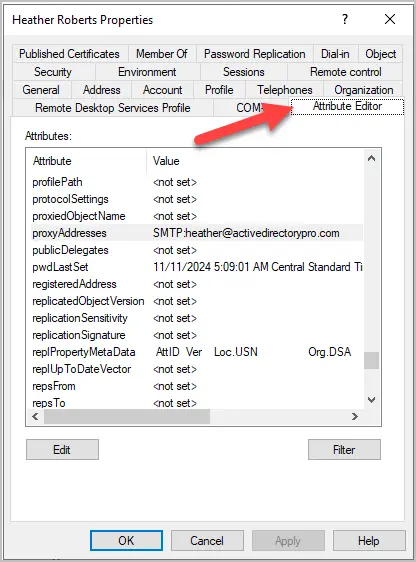
Step 3. Add new proxyAddresses
Click on the proxyAddresses attribute, add the email alias and click “Add”.
Note: The email alias address must start with smtp: The capitalized SMTP is for the primary email address.

After clicking add the email alias should be listed in the values box.
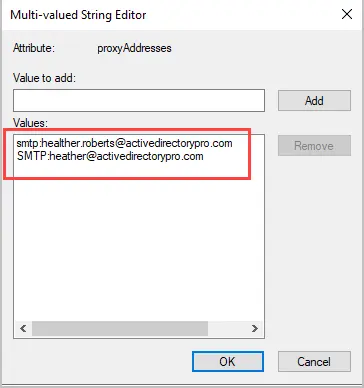
After the account changes have synced you can verify the email alias has been added to 365.
Log into the Office 365 Admin Center
Go to Active Users and open the account you want to check.
On the account tab there is an alias section.
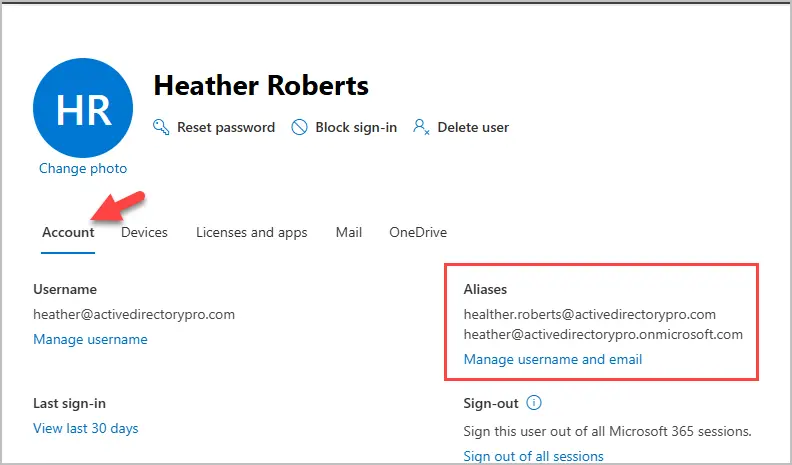
In the screenshot above you can see the email alias “heather.roberts@activedirectorypro.com” has been added to the account. This user can now receive emails on both addresses.
Add Email alias in 365 (Cloud Only)
To add an email alias to 365, follow these steps.
Step 1. Log into Office 365 Admin Center
Step 2. Click on Active Users
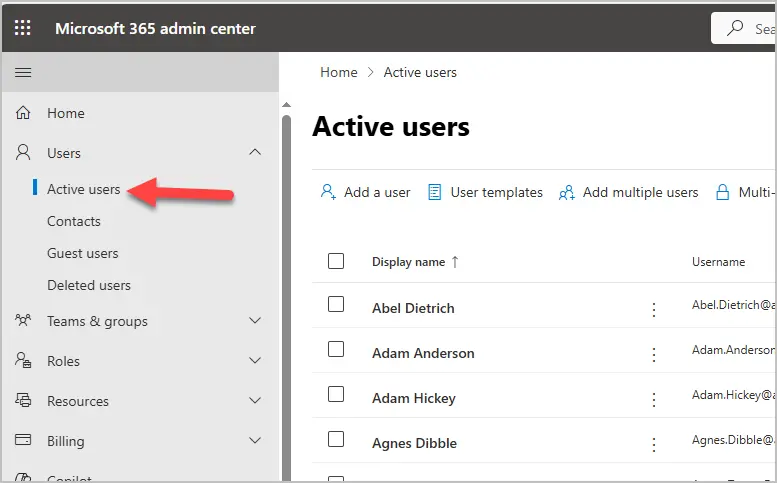
Step 3. Open the account and click on “Manage username and email”
The email aliases are located on the Account tab.
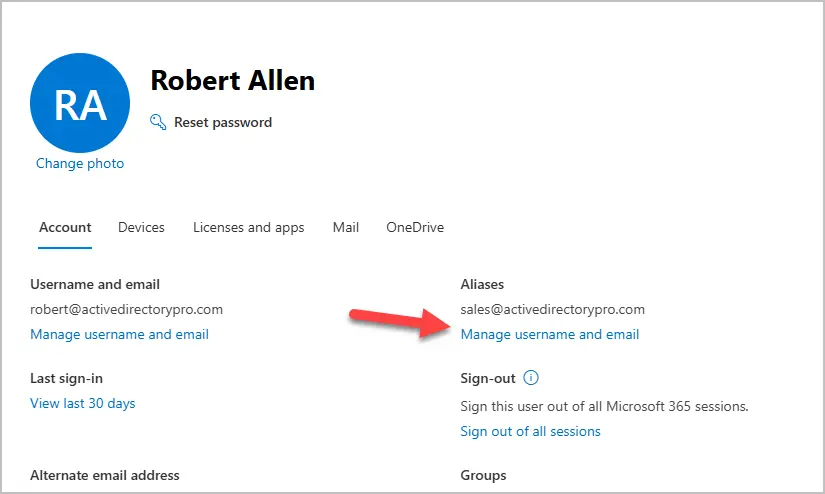
Add the alias and click the “Add button”. In this example, I’m adding the alias “robert.allen@activedirectorypro.com”.
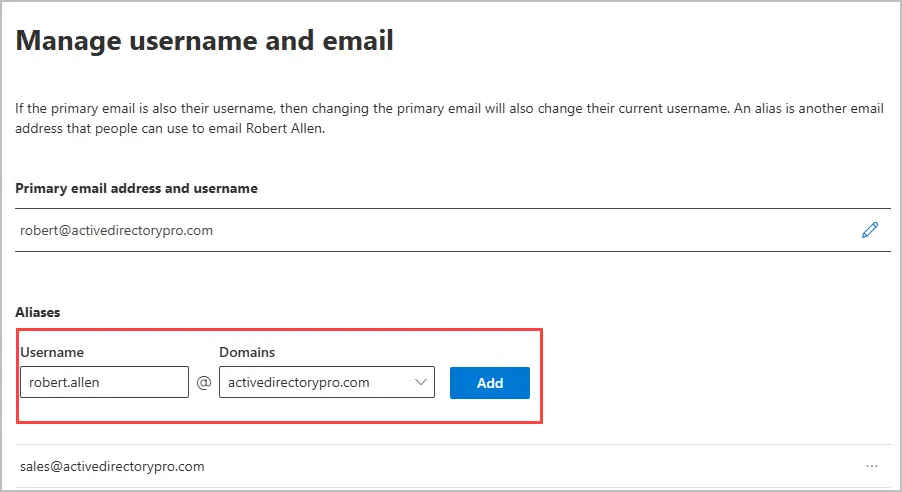
Click “Save changes” to complete the action.
You might need to refresh the page for the new email address to show up.

List All Email Aliases in Active Directory
Overtime the email aliases values can be out of date or contain errors. You can use PowerShell or the AD Pro Toolkit to get a list of all users email aliases.
To get a list of email aliases you need to query the proxyAddresses attribute. The below command will export the users name and all their proxyAddresses (email aliases).
get-aduser -filter * -properties proxyAddresses | select name, proxyaddresses | export-csv -path c:\temp\email-alias-all.csvWith the AD Pro Toolkit this can easily be done with a few mouse clicks. You can also include additional user properties in the export.
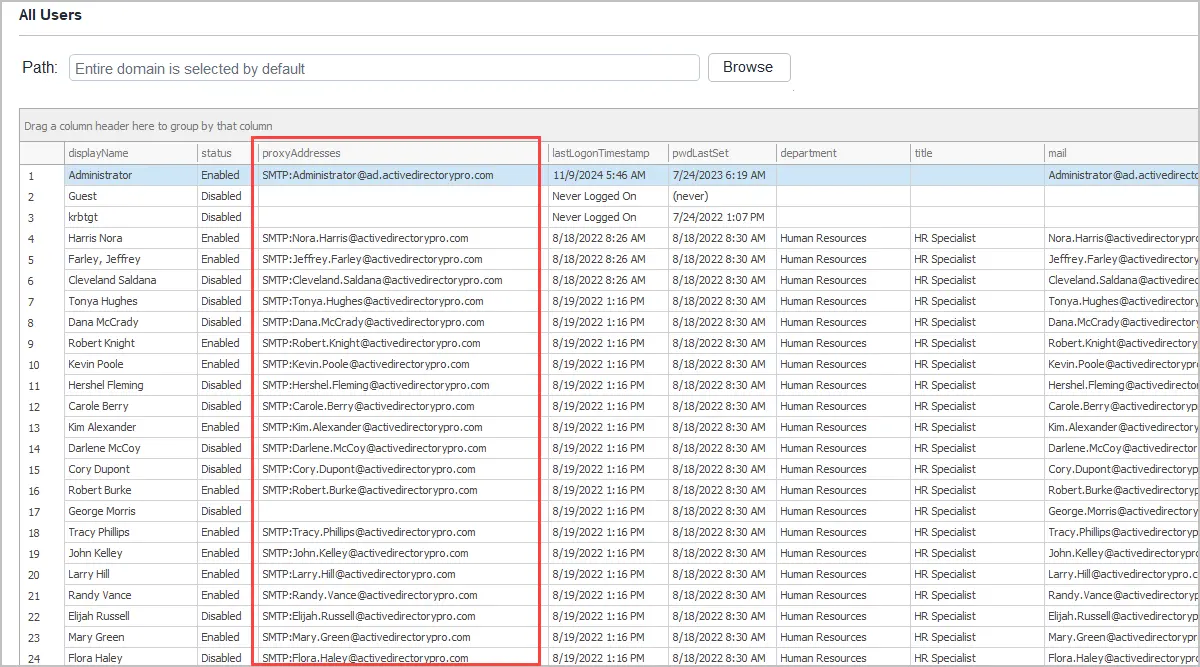
Click the export button to export the list.
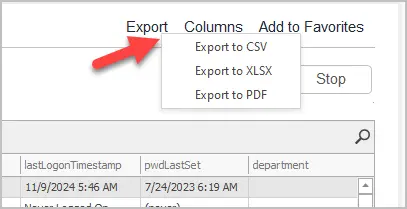
Bulk Add Email Alias to Multiple Users
In this example, I’ll add an email alias to multiple Actie Directory users using the AD Pro Toolkit.
Step 1. Create a CSV file.
The CSV needs two columns
- sAMAccountName = the users logon name
- proxyAddresses = alias address to add
Tip: You can use the included AD Export Tool to get a list of users logon names.
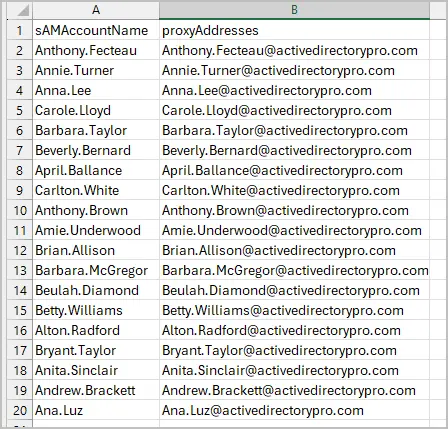
Step 2. Run Bulk Modify Users Tool
Click on “Bulk Modify Users”

Select your CSV file and click “Run”.
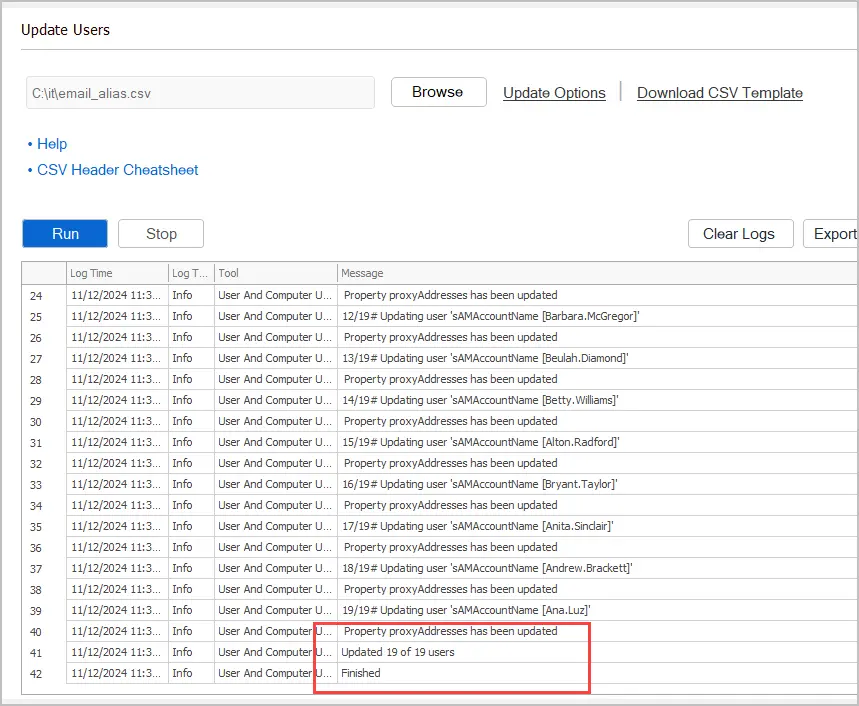
I just added an email alias to 19 users and in total it took about 2 minutes to complete. Using the AD Pro Toolkit is a huge time saver when needing to make bulk changes to Active Directory user accounts.
Download AD Pro Toolkit and see how easy it is to bulk add email alias to user accounts.
Add Email alias using PowerShell
You can add an email alias with PowerShell you would use the Set-ADuser cmdlet.
Set-ADUser robert.allen -add @{ProxyAddresses="smtp:robert.allen.activedirectorypro.com"}In the above example, I added the email alias robert.allen@activedirectorypro.com to the user account “robert.allen”.
To get the email alias with PowerShell use the below command.
get-aduser -Identity robert.allen -properties proxyAddresses | select name, proxyAddresses
